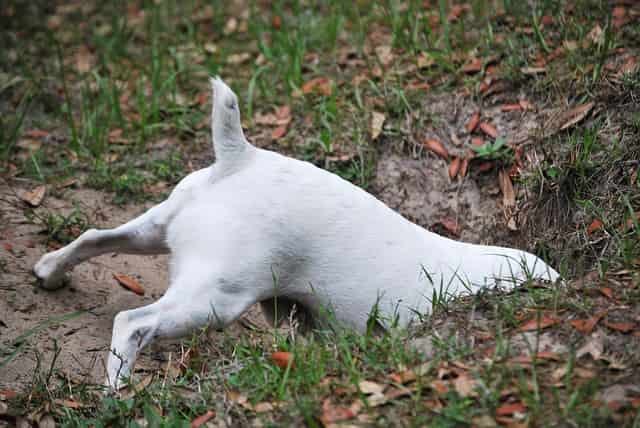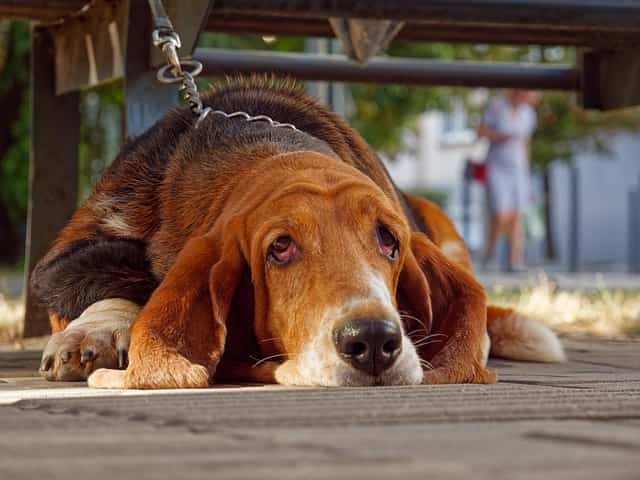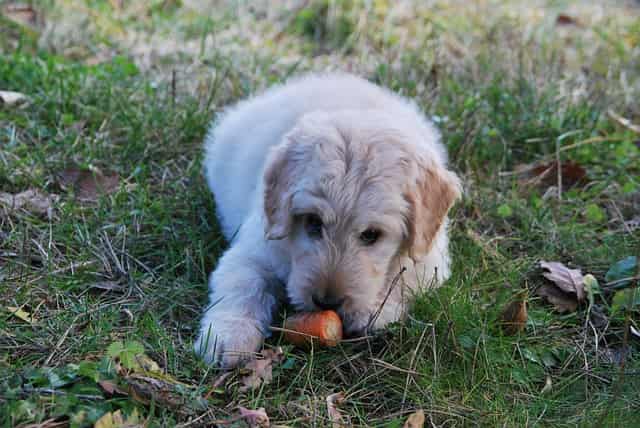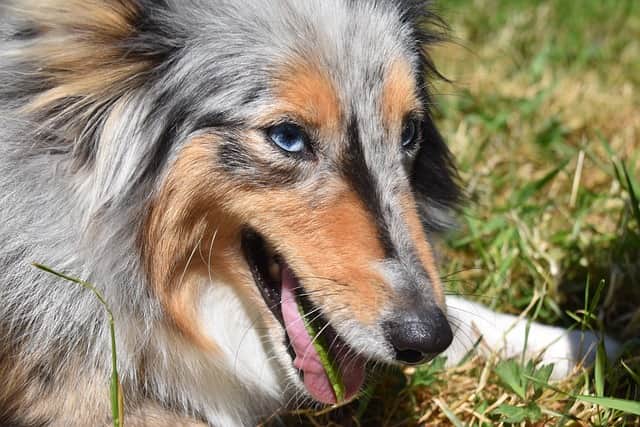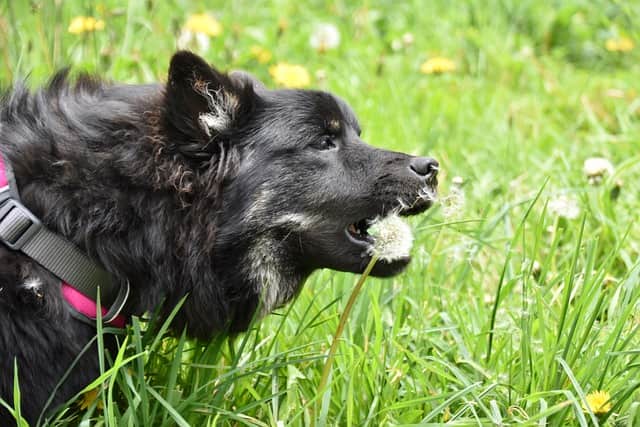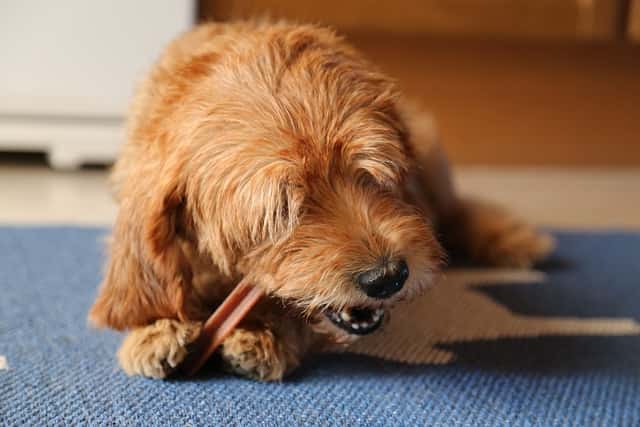
Image by NoName_13 from Pixabay
Dogs have been burying bones for centuries, and it’s a common behavior that many pet owners have witnessed. But why do dogs bury bones? Is it simply a natural instinct or is there something more to it?
One commonly held belief is that dogs bury bones to save them for later. In the wild, dogs would often bury their food to keep it safe from other animals and to preserve it for times when food is scarce. This instinct may still be present in domesticated dogs, even though they have a steady supply of food.
Another theory is that dogs bury bones as a way to mark their territory. By burying a bone, a dog is leaving its scent on the area, which can deter other animals from coming close. This behavior may also be a way for dogs to establish their dominance over a particular area or object.
Theories Behind Bone Burying
There are several theories about why dogs bury bones. One theory is that dogs bury bones as a way to mark their territory. By burying their bones, dogs are leaving a scent that other dogs can detect. This scent marks the area as their territory, and other dogs will be less likely to enter the area.
Another theory is that dogs bury bones as a way to hide them from other animals. Dogs may bury their bones to keep them safe from other dogs, cats, or even humans. By burying their bones, dogs are hiding them in a place where they are less likely to be found.
The Instinctual Behavior of Dogs

The Role of Scent in Bone Burying
Dogs have an incredible sense of smell, and this plays a crucial role in their bone burying behavior. When a dog buries a bone, it leaves behind its scent. This scent acts as a marker, indicating to the dog where the bone is buried. This helps the dog to locate the bone at a later time when it wants to retrieve it. In addition, burying the bone also helps to mask its scent, making it less likely to be detected by other animals.
The act of burying bones not only helps to keep the food safe but also serves as a way for dogs to mark their territory and hide their prized possessions. The role of scent in this behavior is also critical, as it helps dogs to locate and retrieve their buried bones.
Theories Behind Bone Burying
Many dog owners have witnessed their furry friends burying bones in the backyard or hiding them under the couch. But why do dogs do this? There are several theories behind this behavior that have been proposed by animal behaviorists and experts.
Hiding Food for Later
One of the main theories behind bone burying is that dogs are hiding food for later. This behavior is instinctual and stems from the days when dogs were wild and had to hunt for their food. By burying their food, dogs could ensure that they had a steady supply of food even when prey was scarce. This behavior can still be seen in domesticated dogs today, even though they are no longer required to hunt for their food.
Marking Territory
Another theory behind bone burying is that dogs are marking their territory. By burying their bones, dogs are leaving their scent on the bone and the surrounding area. This lets other dogs know that this area is their territory and that they should stay away. This behavior is particularly common in male dogs who are more territorial than females.
The Benefits of Bone Burying

Maintaining Dental Health
One of the main benefits of bone burying for dogs is that it helps maintain their dental health. Chewing on bones helps clean their teeth and gums, removing plaque and tartar buildup that can lead to dental issues such as gum disease and tooth decay. The act of burying the bone and digging it up later also provides additional cleaning action, as dirt and debris can help scrub away any remaining food particles.
Satisfying Natural Instincts
Dogs have a natural instinct to bury things, and bones are no exception. In the wild, dogs would bury their food to keep it safe from other animals and to save it for later. Even though domesticated dogs don’t need to hunt for their food, this instinct is still present. Burying bones satisfies this natural urge and provides a sense of security for the dog.
Providing Mental Stimulation
Bone burying also provides mental stimulation for dogs. The act of digging and burying requires problem-solving skills and can help prevent boredom and destructive behavior. It can also be a fun activity for dogs, as they enjoy the challenge of digging and the satisfaction of finding their buried treasure later.
Overall, bone burying is a natural and beneficial behavior for dogs. It helps maintain their dental health, satisfies their natural instincts, and provides mental stimulation. As long as bones are given in moderation and under supervision, bone burying can be a healthy and enjoyable activity for dogs.
